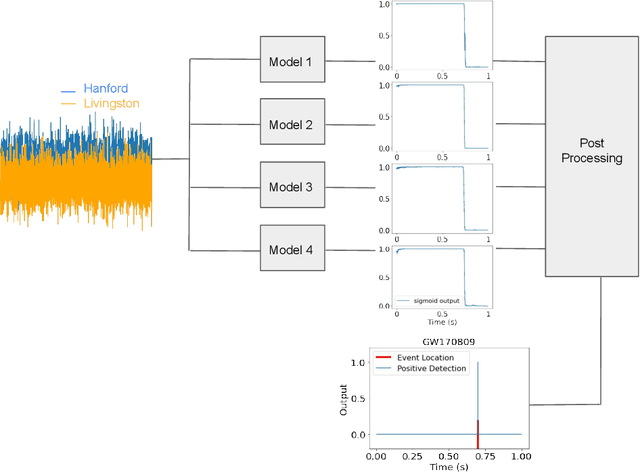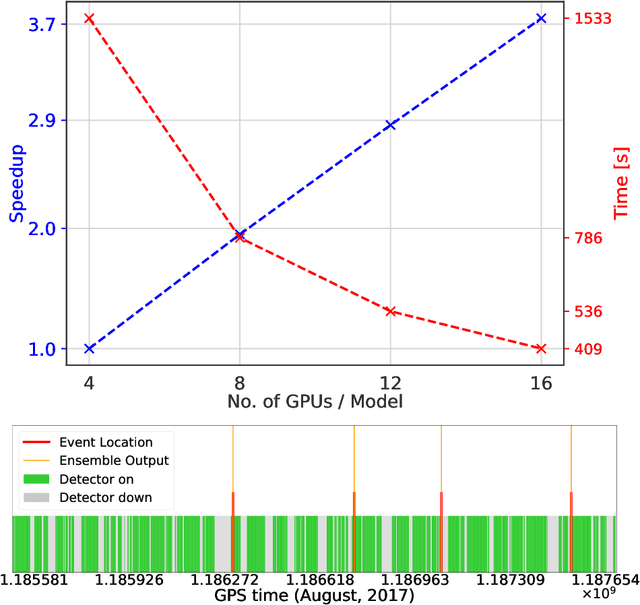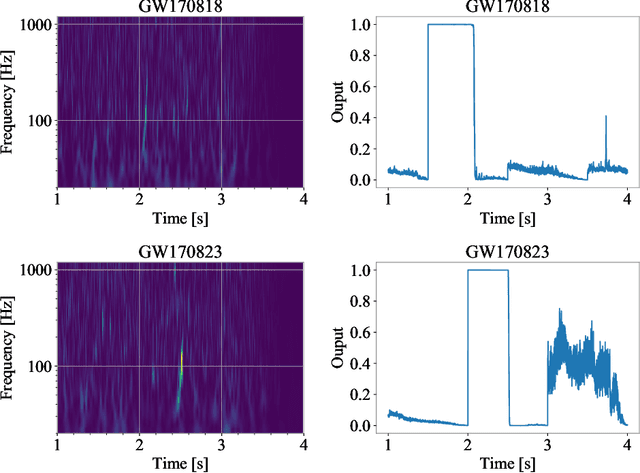Minyang Tian
EAIRA: Establishing a Methodology for Evaluating AI Models as Scientific Research Assistants
Feb 27, 2025Abstract:Recent advancements have positioned AI, and particularly Large Language Models (LLMs), as transformative tools for scientific research, capable of addressing complex tasks that require reasoning, problem-solving, and decision-making. Their exceptional capabilities suggest their potential as scientific research assistants but also highlight the need for holistic, rigorous, and domain-specific evaluation to assess effectiveness in real-world scientific applications. This paper describes a multifaceted methodology for Evaluating AI models as scientific Research Assistants (EAIRA) developed at Argonne National Laboratory. This methodology incorporates four primary classes of evaluations. 1) Multiple Choice Questions to assess factual recall; 2) Open Response to evaluate advanced reasoning and problem-solving skills; 3) Lab-Style Experiments involving detailed analysis of capabilities as research assistants in controlled environments; and 4) Field-Style Experiments to capture researcher-LLM interactions at scale in a wide range of scientific domains and applications. These complementary methods enable a comprehensive analysis of LLM strengths and weaknesses with respect to their scientific knowledge, reasoning abilities, and adaptability. Recognizing the rapid pace of LLM advancements, we designed the methodology to evolve and adapt so as to ensure its continued relevance and applicability. This paper describes the methodology state at the end of February 2025. Although developed within a subset of scientific domains, the methodology is designed to be generalizable to a wide range of scientific domains.
OpenScholar: Synthesizing Scientific Literature with Retrieval-augmented LMs
Nov 21, 2024



Abstract:Scientific progress depends on researchers' ability to synthesize the growing body of literature. Can large language models (LMs) assist scientists in this task? We introduce OpenScholar, a specialized retrieval-augmented LM that answers scientific queries by identifying relevant passages from 45 million open-access papers and synthesizing citation-backed responses. To evaluate OpenScholar, we develop ScholarQABench, the first large-scale multi-domain benchmark for literature search, comprising 2,967 expert-written queries and 208 long-form answers across computer science, physics, neuroscience, and biomedicine. On ScholarQABench, OpenScholar-8B outperforms GPT-4o by 5% and PaperQA2 by 7% in correctness, despite being a smaller, open model. While GPT4o hallucinates citations 78 to 90% of the time, OpenScholar achieves citation accuracy on par with human experts. OpenScholar's datastore, retriever, and self-feedback inference loop also improves off-the-shelf LMs: for instance, OpenScholar-GPT4o improves GPT-4o's correctness by 12%. In human evaluations, experts preferred OpenScholar-8B and OpenScholar-GPT4o responses over expert-written ones 51% and 70% of the time, respectively, compared to GPT4o's 32%. We open-source all of our code, models, datastore, data and a public demo.
SciCode: A Research Coding Benchmark Curated by Scientists
Jul 18, 2024



Abstract:Since language models (LMs) now outperform average humans on many challenging tasks, it has become increasingly difficult to develop challenging, high-quality, and realistic evaluations. We address this issue by examining LMs' capabilities to generate code for solving real scientific research problems. Incorporating input from scientists and AI researchers in 16 diverse natural science sub-fields, including mathematics, physics, chemistry, biology, and materials science, we created a scientist-curated coding benchmark, SciCode. The problems in SciCode naturally factorize into multiple subproblems, each involving knowledge recall, reasoning, and code synthesis. In total, SciCode contains 338 subproblems decomposed from 80 challenging main problems. It offers optional descriptions specifying useful scientific background information and scientist-annotated gold-standard solutions and test cases for evaluation. Claude3.5-Sonnet, the best-performing model among those tested, can solve only 4.6% of the problems in the most realistic setting. We believe that SciCode demonstrates both contemporary LMs' progress towards becoming helpful scientific assistants and sheds light on the development and evaluation of scientific AI in the future.
AI ensemble for signal detection of higher order gravitational wave modes of quasi-circular, spinning, non-precessing binary black hole mergers
Sep 29, 2023Abstract:We introduce spatiotemporal-graph models that concurrently process data from the twin advanced LIGO detectors and the advanced Virgo detector. We trained these AI classifiers with 2.4 million \texttt{IMRPhenomXPHM} waveforms that describe quasi-circular, spinning, non-precessing binary black hole mergers with component masses $m_{\{1,2\}}\in[3M_\odot, 50 M_\odot]$, and individual spins $s^z_{\{1,2\}}\in[-0.9, 0.9]$; and which include the $(\ell, |m|) = \{(2, 2), (2, 1), (3, 3), (3, 2), (4, 4)\}$ modes, and mode mixing effects in the $\ell = 3, |m| = 2$ harmonics. We trained these AI classifiers within 22 hours using distributed training over 96 NVIDIA V100 GPUs in the Summit supercomputer. We then used transfer learning to create AI predictors that estimate the total mass of potential binary black holes identified by all AI classifiers in the ensemble. We used this ensemble, 3 AI classifiers and 2 predictors, to process a year-long test set in which we injected 300,000 signals. This year-long test set was processed within 5.19 minutes using 1024 NVIDIA A100 GPUs in the Polaris supercomputer (for AI inference) and 128 CPU nodes in the ThetaKNL supercomputer (for post-processing of noise triggers), housed at the Argonne Leadership Supercomputing Facility. These studies indicate that our AI ensemble provides state-of-the-art signal detection accuracy, and reports 2 misclassifications for every year of searched data. This is the first AI ensemble designed to search for and find higher order gravitational wave mode signals.
Physics-inspired spatiotemporal-graph AI ensemble for gravitational wave detection
Jun 27, 2023Abstract:We introduce a novel method for gravitational wave detection that combines: 1) hybrid dilated convolution neural networks to accurately model both short- and long-range temporal sequential information of gravitational wave signals; and 2) graph neural networks to capture spatial correlations among gravitational wave observatories to consistently describe and identify the presence of a signal in a detector network. These spatiotemporal-graph AI models are tested for signal detection of gravitational waves emitted by quasi-circular, non-spinning and quasi-circular, spinning, non-precessing binary black hole mergers. For the latter case, we needed a dataset of 1.2 million modeled waveforms to densely sample this signal manifold. Thus, we reduced time-to-solution by training several AI models in the Polaris supercomputer at the Argonne Leadership Supercomputing Facility within 1.7 hours by distributing the training over 256 NVIDIA A100 GPUs, achieving optimal classification performance. This approach also exhibits strong scaling up to 512 NVIDIA A100 GPUs. We then created ensembles of AI models to process data from a three detector network, namely, the advanced LIGO Hanford and Livingston detectors, and the advanced Virgo detector. An ensemble of 2 AI models achieves state-of-the-art performance for signal detection, and reports seven misclassifications per decade of searched data, whereas an ensemble of 4 AI models achieves optimal performance for signal detection with two misclassifications for every decade of searched data. Finally, when we distributed AI inference over 128 GPUs in the Polaris supercomputer and 128 nodes in the Theta supercomputer, our AI ensemble is capable of processing a decade of gravitational wave data from a three detector network within 3.5 hours.
Inference-optimized AI and high performance computing for gravitational wave detection at scale
Jan 26, 2022



Abstract:We introduce an ensemble of artificial intelligence models for gravitational wave detection that we trained in the Summit supercomputer using 32 nodes, equivalent to 192 NVIDIA V100 GPUs, within 2 hours. Once fully trained, we optimized these models for accelerated inference using NVIDIA TensorRT. We deployed our inference-optimized AI ensemble in the ThetaGPU supercomputer at Argonne Leadership Computer Facility to conduct distributed inference. Using the entire ThetaGPU supercomputer, consisting of 20 nodes each of which has 8 NVIDIA A100 Tensor Core GPUs and 2 AMD Rome CPUs, our NVIDIA TensorRT-optimized AI ensemble porcessed an entire month of advanced LIGO data (including Hanford and Livingston data streams) within 50 seconds. Our inference-optimized AI ensemble retains the same sensitivity of traditional AI models, namely, it identifies all known binary black hole mergers previously identified in this advanced LIGO dataset and reports no misclassifications, while also providing a 3X inference speedup compared to traditional artificial intelligence models. We used time slides to quantify the performance of our AI ensemble to process up to 5 years worth of advanced LIGO data. In this synthetically enhanced dataset, our AI ensemble reports an average of one misclassification for every month of searched advanced LIGO data. We also present the receiver operating characteristic curve of our AI ensemble using this 5 year long advanced LIGO dataset. This approach provides the required tools to conduct accelerated, AI-driven gravitational wave detection at scale.
Confluence of Artificial Intelligence and High Performance Computing for Accelerated, Scalable and Reproducible Gravitational Wave Detection
Dec 15, 2020



Abstract:Finding new ways to use artificial intelligence (AI) to accelerate the analysis of gravitational wave data, and ensuring the developed models are easily reusable promises to unlock new opportunities in multi-messenger astrophysics (MMA), and to enable wider use, rigorous validation, and sharing of developed models by the community. In this work, we demonstrate how connecting recently deployed DOE and NSF-sponsored cyberinfrastructure allows for new ways to publish models, and to subsequently deploy these models into applications using computing platforms ranging from laptops to high performance computing clusters. We develop a workflow that connects the Data and Learning Hub for Science (DLHub), a repository for publishing machine learning models, with the Hardware Accelerated Learning (HAL) deep learning computing cluster, using funcX as a universal distributed computing service. We then use this workflow to search for binary black hole gravitational wave signals in open source advanced LIGO data. We find that using this workflow, an ensemble of four openly available deep learning models can be run on HAL and process the entire month of August 2017 of advanced LIGO data in just seven minutes, identifying all four binary black hole mergers previously identified in this dataset, and reporting no misclassifications. This approach, which combines advances in AI, distributed computing, and scientific data infrastructure opens new pathways to conduct reproducible, accelerated, data-driven gravitational wave detection.
 Add to Chrome
Add to Chrome Add to Firefox
Add to Firefox Add to Edge
Add to Edge